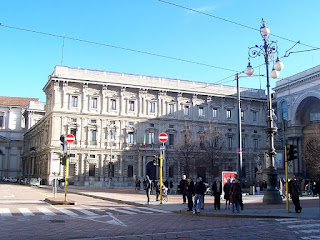Pioneered new techniques for treating breast cancer
 |
| Umberto Veronesi made an important contribution to breast cancer treatment |
Along with many other contributions to the knowledge of breast cancer and breast cancer prevention over a 50-year career, Veronese was a pioneer of breast-conserving surgery in early breast cancer as an alternative to a radical mastectomy.
He developed the technique of quadrantectomy, which limits surgical resection to the affected quarter of the breast.
This more limited resection became standard practice for the treatment of breast cancer detected early after Veronesi led the first prospective randomised trial of breast-conserving surgery, which compared outcomes from radical mastectomy against his quadrantectomy over a 20-year period.
Veronesi supported and promoted research aimed at improving conservative surgical techniques in general and conducting studies on tamoxifen and retinoids which helped verify their effectiveness in preventing the formation of cancer in the first place.
The founder and president of the Umberto Veronesi Foundation, he founded and held the role of scientific director and scientific director emeritus of the European Institute of Oncology, was scientific director of the National Cancer Institute of Milan and held the position of Minister of Health from April 2000 to June 2001 in the second government of prime minister Giuliano Amati.
Veronesi grew up in Casoretto, which was then an agricultural suburb of Milan, where his father was a tenant farmer. He was one of six children. The family home was relatively remote, the only source of heat in the winter a fireplace in the kitchen. Going to school necessitated a 5km (three miles) walk to school and back, but his parents were determined that their five sons and a daughter would enjoy a good education.
 |
| Veronesi pictured at a book signing in 2013, still working at the age of 87 |
He began to focus on cancer soon after graduating in medicine and surgery at the University of Milan in 1951 and specialising in surgery at the University of Pavia. He travelled to England and France to broaden his knowledge and joined the National Cancer Institute, of which he would become director-general in 1975, as a volunteer.
In the course of what would be a brilliant career, his far-sighted ideas were not well received initially and he had to fight to convince others. Yet in time his scientific projects opened new boundaries in cancer treatment. His belief in joining forces with patients, communicating with them clearly about their treatment and enlisting their help in campaigns to raise funds helped change attitudes towards the disease.
Veronesi too was instrumental in removing regulatory barriers in the management of terminal cancer patients, making opioid painkillers available to those whose cancer could not be cured.
 |
| Veronesi (right) with then president Giorgio Napolitano in 2011 |
President of the Italian Nuclear Safety Agency from 2010-11, he resigned from that position in protest at the Berlusconi government for failing to provide the agency with even the minimum structures to carry out its activities.
He was a strong advocate of animal rights, believed in voluntary euthanasia and, controversially, supported the genetic modification of food because of its possibilities for helping parts of the world prone to crop failures and famine, and for removing naturally occurring carcinogens.
His outspoken opposition to doctors’ strikes in the 1980s, however, caused him to fall foul of the Red Brigades, whose death threats left him looking over his shoulder in public for several years.
Veronesi died at home in November 2016 not long before what would have been his 91st birthday. After a secular funeral at Palazzo Marino, Milan’s city hall, where his son, Alberto, a conductor, led two musical pieces by Beethoven and Puccini, his body was cremated.
 |
| Via Casoretto, looking towards the church of Santa Maria Bianca della Misericordia |
The Casoretto of today is a neighbourhood in the northeastern suburbs of Milan, forming part of an area locally known as NoLo, an acronym for North of Loreto. The area is multicultural with a vibrant nightlife, art galleries and restaurants. Casoretto is notable for colourful houses and an unusually high number of cycle repair shops, reflecting local beliefs in eco-friendly travel. The neighbourhood fans out from the central Via Casoretto and the church of Santa Maria Bianca della Misericordia, which is sometimes known as the Abbey of Casoretto. Until the start of the 20th century and industrialisation, the area was characterised by farmhouses and cultivated fields, with no significant residential areas apart from a few farmhouses and other buildings around the Abbey.
 |
| Palazzo Marino, with the entrace to the Galleria Vittorio Emanuele II to the right of the picture |
Palazzo Marino, where Veronesi’s secular funeral was held, is a 16th-century palace located in Piazza della Scala, in the centre of Milan. Standing opposite the world-famous opera house, Teatro alla Scala, and next to the northern entrance to the Galleria Vittorio Emanuele II, it has been Milan’s city hall since 1861. Designed by architect Galeazzo Alessi, it was built between 1557 and 1563 for Tommaso Marino, a wealthy Genovese banker and merchant. After Marino died, leaving his family bankrupt, the palace became the property of the state before being sold to another banker, Carlo Omodei, who did not live there himself but rented it out to other notable Milanese, before reverting to state ownership in 1781. After being established as the seat of Milan’s municipal government in 1861, the palace was given a new facade to coincide with the creation of Piazza della Scala, undergoing a second major restoration after it was badly damaged by bombing in World War Two.
Also on this day:
1873: The death of astronomer Caterina Scarpellini
1907: The birth of novelist Alberto Moravia
1913: The birth of composer Mario Nascembene
1941: The birth of actress Laura Antonelli
1955: The birth of footballer Alessandro Altobelli
1977: The birth of World Cup hero Fabio Grosso
.jpeg)
.jpg)

































